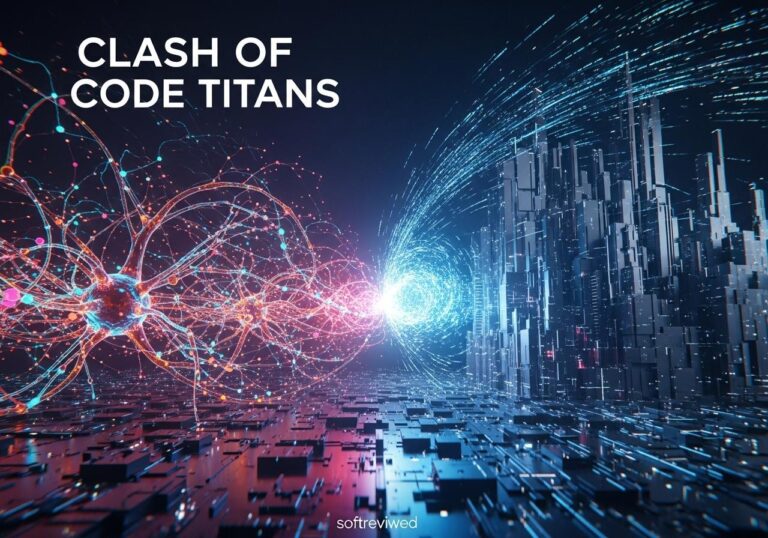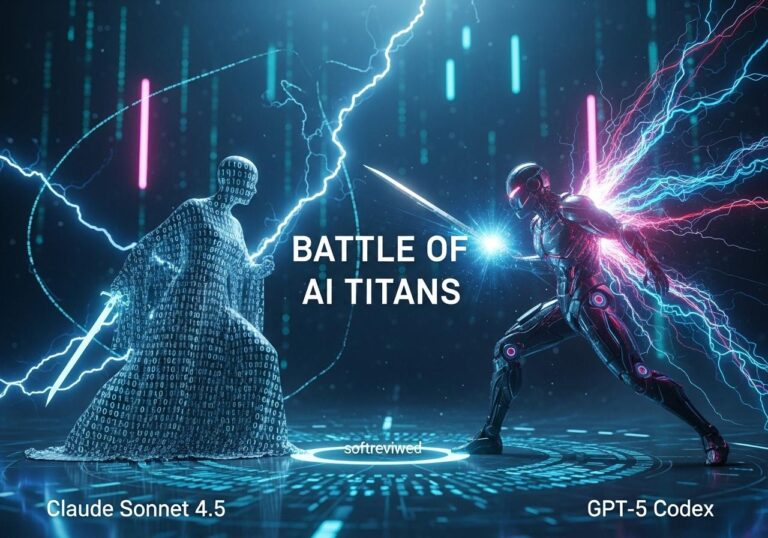OpenAI Operator: The Future of Task Automation
Launching January 2025: A revolutionary AI agent that autonomously performs everyday tasks through browser interaction.
Tool Functionality
An advanced AI agent that operates through browser interfaces to perform various tasks autonomously, revolutionizing daily task management.
Task Diversity
Capable of handling various tasks from ordering groceries to making reservations, all through simple user directives.
Autonomous Operation
Functions independently after receiving user instructions, streamlining task completion through AI-driven automation.
Browser-Based Integration
Utilizes web browsers to execute tasks, mimicking human interaction patterns while maintaining efficiency and accuracy.
Future Development
Set to integrate with other OpenAI technologies, including Blueprint, expanding its capabilities and applications.
Imagine having an AI assistant that can not only understand your requests but also independently navigate the web to complete tasks for you. That’s precisely what Operator does. This isn’t just another chatbot; Operator represents a leap into the realm of autonomous AI agents that can use a web browser to accomplish a wide array of tasks, marking a significant step in AI-driven automation. This innovative approach leverages a new model called Kua, pushing the boundaries of what AI can do, specifically with web interaction and task automation. The implications for productivity and efficiency are immense, promising a shift in how we interact with the digital world.
The Dawn of AI Agents: Introducing OpenAI’s Operator
Introducing Operator, an early research preview of an AI agent designed to interact with the web. Operator moves beyond simply responding to prompts. Instead, it uses a cloud-based web browser, giving it the ability to see, click, and type just like a human user. This capability opens up a world of possibilities for automating online tasks. The ambition is to enhance productivity and free up individuals to concentrate on more creative and strategic endeavors. The launch marks the beginning of a series of AI agent releases, with more agents set to follow in the coming weeks and months.
What is Operator and How Does It Work?
Operator functions by using a remote browser, enabling it to perform tasks directly on websites. You provide a prompt—a request or instruction—and Operator executes it by interacting with the web browser as a human would. It observes the screen, uses the mouse and keyboard controls, and navigates websites to achieve its objective. It’s not limited to specific websites or APIs. It can interact with virtually any site that can be accessed with a standard web browser. This adaptability is a core strength of Operator, removing reliance on pre-defined website APIs.
Understanding the Core Tech: The Computer Using Agent (Kua) Model
At the heart of Operator is the Computer Using Agent (Kua) model, developed by OpenAI. Built upon the foundation of GPT-4, Kua has been specially trained to use and control a computer like a human, by processing visual information from the screen. Rather than relying on specialized APIs, Kua interacts with the digital world via the same basic interface that we do: the screen, mouse, and keyboard. This methodology significantly broadens the scope of what AI agents can achieve, allowing them to operate on almost any website or platform. Kua removes the API bottleneck, making a much broader range of software accessible to AI agents.
Operator in Action: Real-World Task Automation
The potential of Operator is demonstrated through a variety of real-world examples, showcasing its capacity to handle everyday tasks. Let’s see how it performs in several scenarios.
Booking a Table: Operator’s Restaurant Reservation Skills
Imagine needing to book a table at your favorite restaurant. With Operator, you can simply provide a prompt like “Book me a table for two at Beretta tonight at 7 p.m.” Operator will then navigate to OpenTable (or similar) and complete the reservation process. It is also able to adjust to unexpected changes. In the demo, when 7:00 PM wasn’t available, Operator suggested 7:45 PM and asked for confirmation before proceeding. This level of interaction is a key component of Operator’s functionality. It showcases the capacity to handle basic yet time-consuming activities autonomously.
Grocery Shopping Made Easy: Operator Handles Your Shopping List
Grocery shopping is another example where Operator shines. You can upload a shopping list (even a picture of a handwritten list) and instruct Operator to “buy this for me” on Instacart. The agent can then process the list, find the products, and add them to your cart. In the demonstration, Operator not only recognized items from a picture but also identified the user’s preferred store. This example reveals its advanced capability to interpret image-based instructions, streamlining online grocery shopping.
Expanding Horizons: Other Tasks Operator Can Automate
Beyond restaurant reservations and grocery shopping, Operator demonstrates adaptability across various online tasks. In the live demo, multiple simultaneous tasks were initiated. This included searching for tennis courts, finding house cleaners, and even ordering pizza. All these tasks highlight Operator’s capacity to handle diverse requests across different platforms and demonstrate its broad utility.
- Operator can browse websites and perform actions, just like a human user.
- This opens up many possibilities for automating everyday online chores.
- It can also learn through user feedback and adjust its actions based on that feedback.
- The potential applications are vast and only limited by the breadth of the internet.
The Human-AI Collaboration: Taking Control and Providing Guidance

A key design element of Operator is its commitment to human oversight and control. You can take control of the browser session at any moment, performing actions yourself and then handing control back to Operator to continue the task. This seamless interaction allows you to guide the agent as needed. It also allows you to correct its mistakes or take a step yourself, providing flexibility and ensuring that the user is always in charge. This collaborative mode promotes a more personalized and efficient experience, letting users delegate tasks to Operator while retaining full control of their actions. This ensures users are in control, and the system is safe and reliable.
Confirmations and Safety Measures: Ensuring a Smooth and Secure Experience
OpenAI has taken a thoughtful approach to the deployment of Operator, emphasizing safety and reliability. The system is equipped with multiple layers of protection to avoid harmful tasks. It refuses harmful tasks and includes moderation models, post-task detection, and blocked websites. Additionally, Operator employs a confirmation mechanism to ensure that you’re aware of and agree with its actions. It will ask for confirmation before making a reservation, purchasing an item, or undertaking similar actions. This is done to prevent errors or incorrect actions. The system is also designed to avoid taking actions that could be considered fraudulent or malicious. The focus is on creating a balanced and safe environment for both the agent and the user.
How Reliable is Operator?: Benchmarking Performance
While Operator presents impressive capabilities, it’s important to remember that it’s still in an early research phase. To quantify its performance, OpenAI uses various benchmarks.
OS World and Web Arena: Understanding Operator’s Capabilities
Two such benchmarks are OS World and Web Arena. OS World evaluates how well an AI agent can navigate an operating system like Linux. In this test, Kua, the underlying model, achieved a score of 38.1%, exceeding other publicly published results. However, this score still lags behind human performance, which is at 72.4%, indicating there’s room for improvement. Web Arena measures an agent’s ability to navigate common websites. Kua scored 58.1% on this benchmark, again surpassing other publicly published scores but falling short of human capabilities. These benchmarks offer an overview of Operator’s current level of performance and highlight the areas where further enhancements are being targeted. It is essential to understand this is a research preview, and results may vary.
The Path Ahead: Expanding Operator and Agent Capabilities
OpenAI is dedicated to advancing Operator and the entire agent ecosystem. The company is committed to ongoing improvements, making the technology more affordable and accessible. More agents are planned for release in the coming months and weeks, further expanding the range of capabilities available to users. The future development path includes making the platform more readily available and extending its range of functions.
API Access and Future Deployments: What’s Next for AI Agents?
OpenAI is also planning to provide API access to the underlying Kua model, which is exciting news for developers. This will allow external integration and customization, enabling individuals to build their own AI agents. This also means that Operator’s capabilities will be available to external developers in the near future, giving them even more options to build upon the technology. This API launch signifies a strategic move towards expanding the accessibility and usability of OpenAI’s agent technology. You can also check out their official website to explore OpenAI’s offerings.
What Impact Does OpenAI’s O3 & O3 Mini Have on the Performance of OpenAI’s Operator?
The launch of OpenAI’s O3 and O3 Mini significantly elevates the performance of OpenAI’s Operator. By leveraging advanced algorithms and optimized processing, these models enhance efficiency and accuracy in various applications. An openai o3 benchmarks overview reveals impressive improvements in response time and output quality, setting new standards in AI computational prowess.
A New Chapter in AI: What Does Operator Mean for the Future?
Operator represents a significant stride toward a more automated and efficient future. As AI agents become more adept at interacting with the digital world, our daily tasks are bound to transform. Operator embodies a practical step in the development of AI, moving it beyond theoretical concepts towards practical applications. While still in its early stages, it offers a compelling preview of how we might collaborate with AI agents in the near future. This shift promises to significantly alter the way we manage our online chores, creating more time and opportunity for creativity and strategy.
OpenAI Operator Capabilities Overview
This chart illustrates key metrics and capabilities of OpenAI’s Operator tool, showing its task completion rate and API compatibility at launch.







